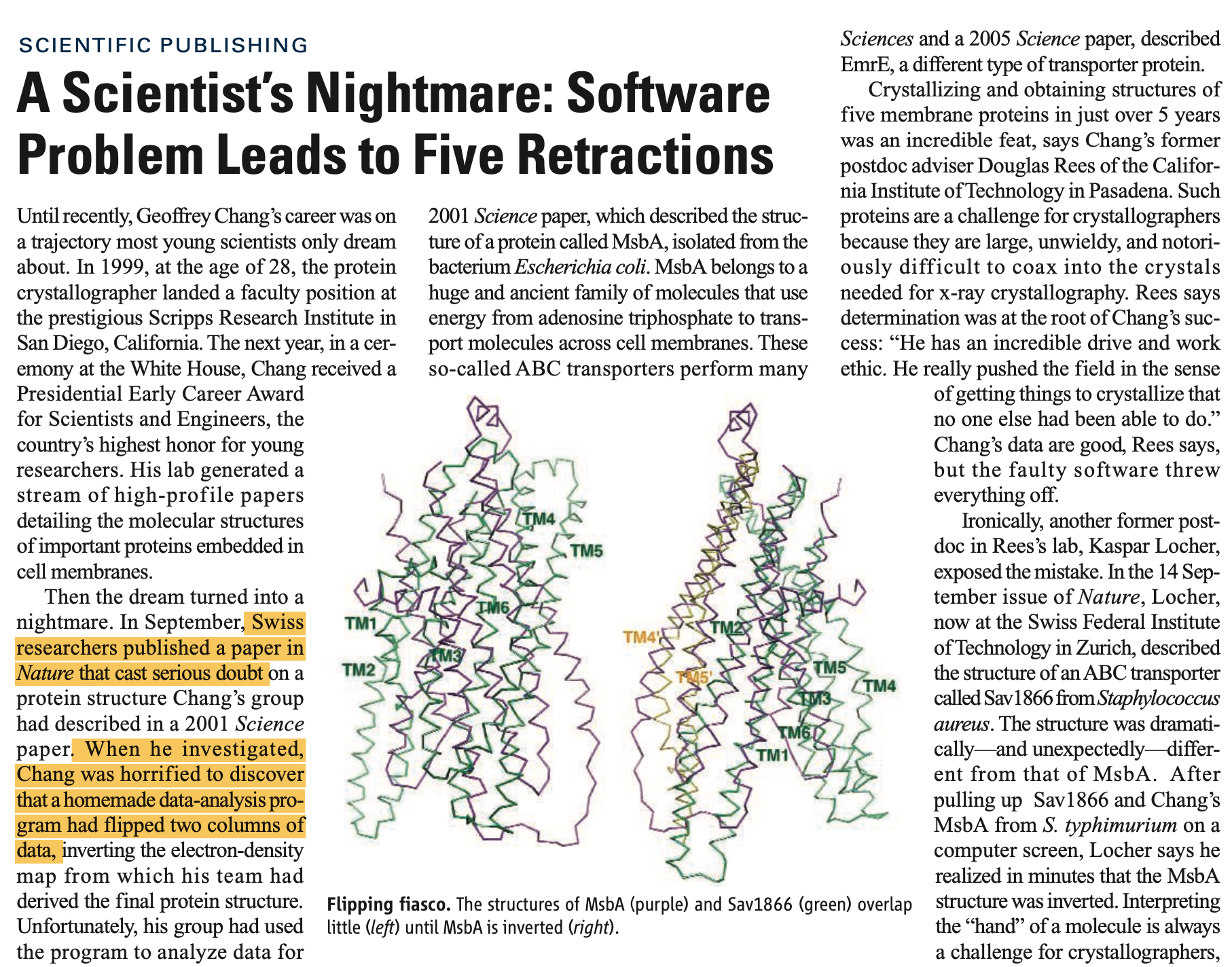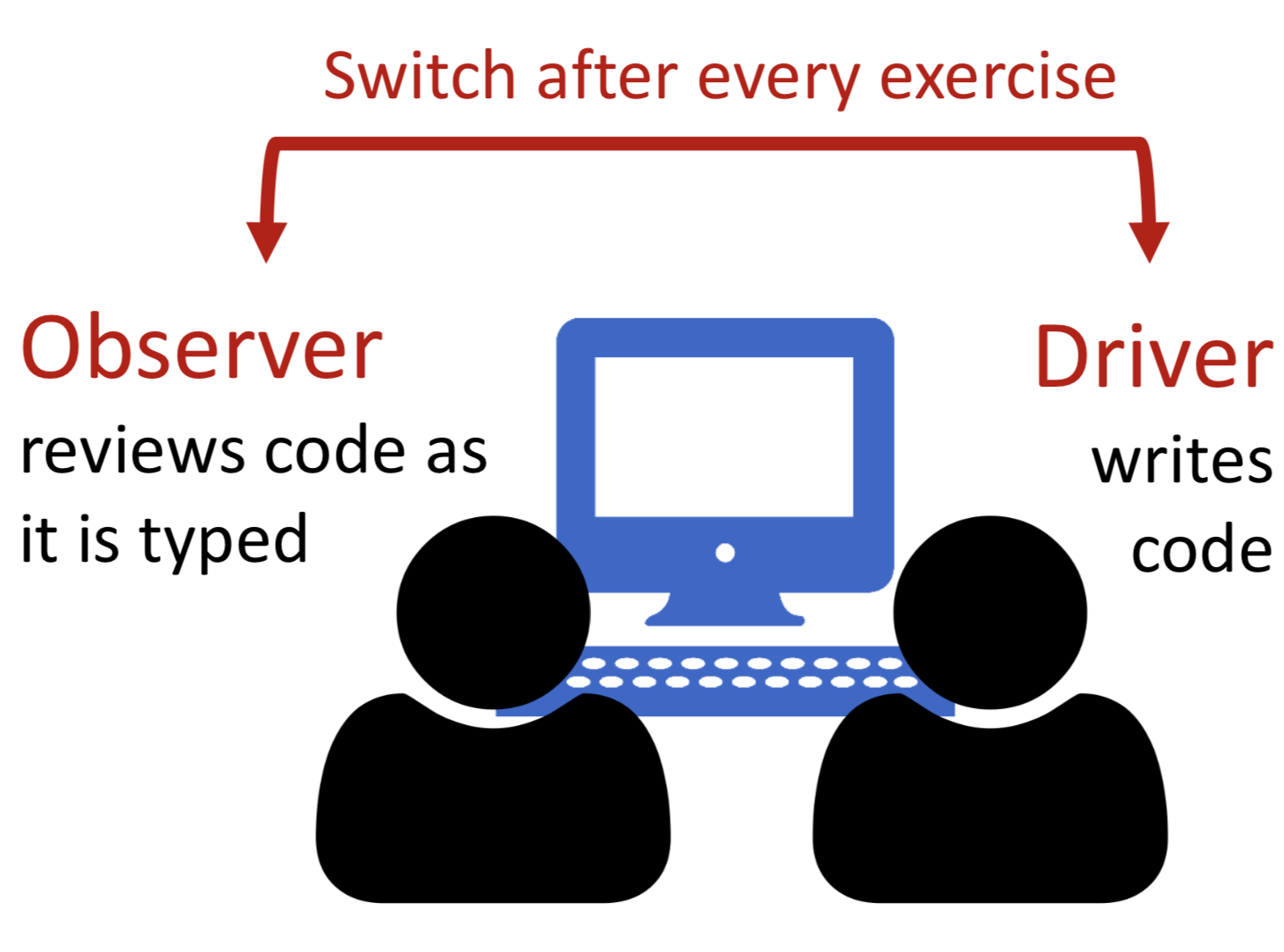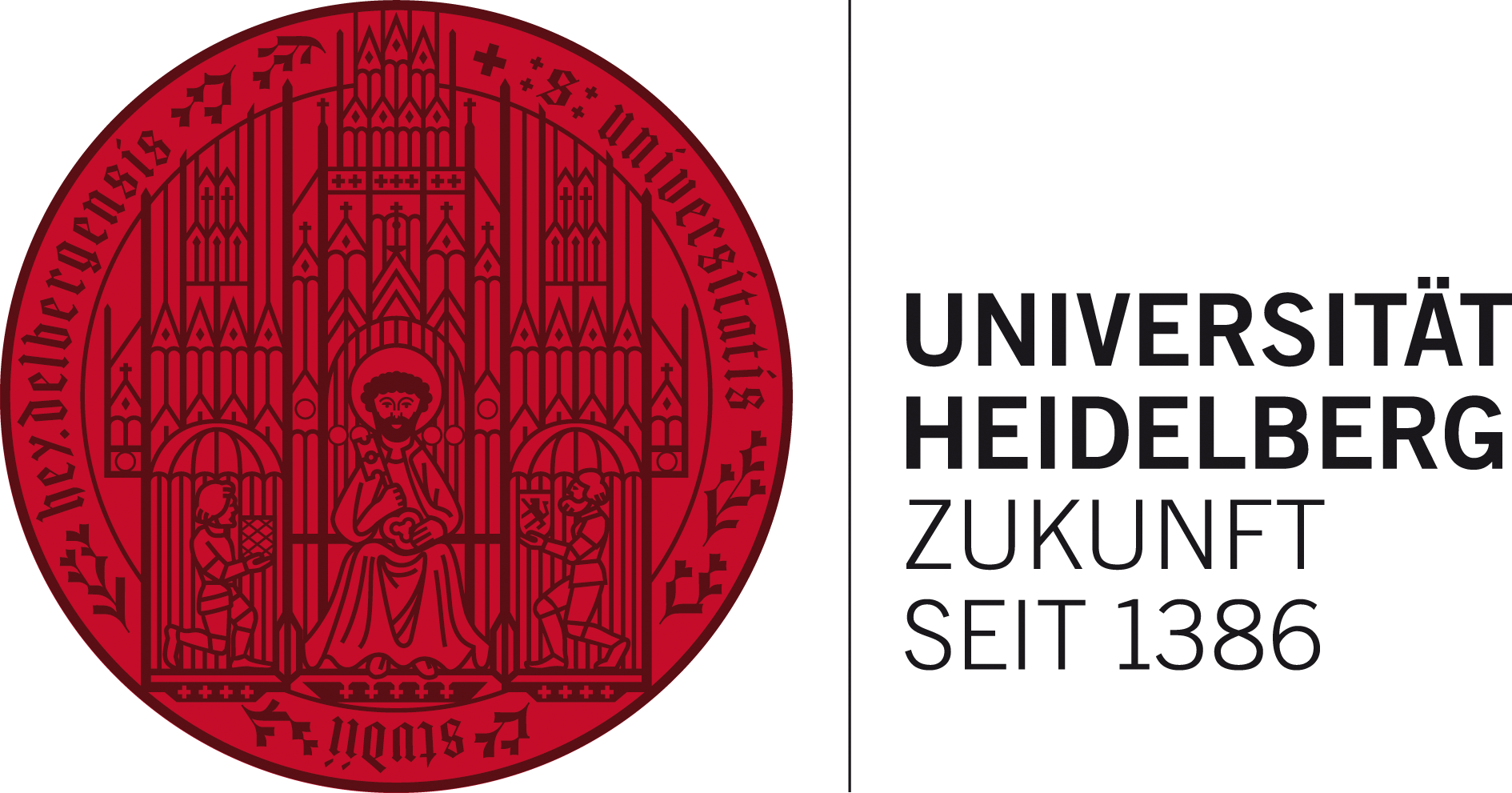Aim and purpose#
Take this course so this won’t happen to you:

Learning goals of this course#
By the end of the course you should be able to …
… know and use best-practices to write “good scientific code”.
… know how to use tools such as Git and your IDE to fulfill these best practices.
… write a well structured, readable, maintainable and documented program,
… test your program to ensure correct, reliable and reproducible results.
… use git to keep track of all your changes and collaborate with others.
… find resources to teach yourself new tools for scientific programming.
Working Style: Pair Programming#

References#
Wilson G, Aruliah DA, Brown CT, Chue Hong NP, Davis M, Guy RT, et al. (2014) Best Practices for Scientific Computing. PLoS Biol 12(1): e1001745. https://doi.org/10.1371/journal.pbio.1001745
Miller, G. (2006). A scientist’s nightmare: software problem leads to five retractions.
